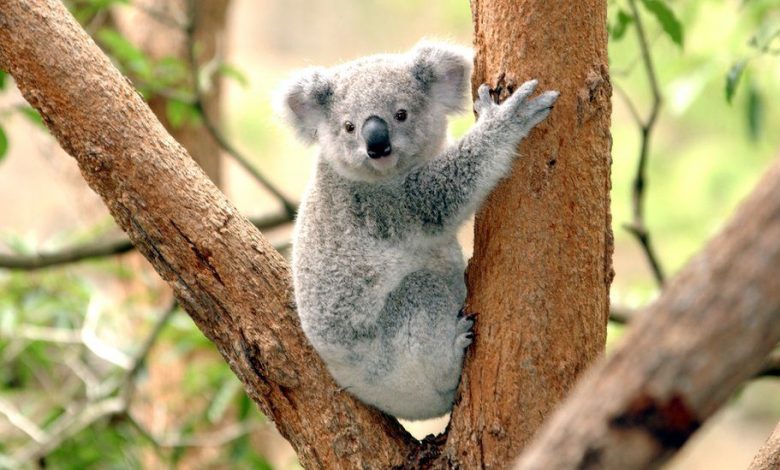The koala

The koala is classified with wombats (family Vombatidae) and several extinct families (including marsupial tapirs, marsupial lions and giant
wombats) in the suborder Vombatiformes within the order Diprotodontia.[12] The Vombatiformes are a sister group to a clade that includes macropods (k
angaroos and wallabies) and possums.[13] The ancestors of vombatiforms were likely arboreal,[9] and the koala’s lineage was possibly the first to branch off around 40 million years ago during the Eocene.[14]
Reconstructions of the ancient koalas Nimiokoala (larger), and Litokoala (smaller), from the Miocene Riversleigh Fauna
The modern koala is the only extant member of Phascolarctidae, a family that once included several genera and species. During the Oligocene and Miocene, koalas lived in rainforests and had less specialised diets.[15] Some species, such as the Riversleigh rainforest koa
la (Nimiokoala greystanesi) and some species of Perikoala, were around the same size as the modern koala, while others, such as species of Litokoala, were one-half to two-thirds its size.[16] Like the modern species, prehistoric koalas had well developed ear structures wh
ich suggests that long-distance vocalising and sedentism developed early.[15] During the Miocene, the Australian continent began drying out, leading to the decline of rainforests and the spread of open Eucalyptus woodlands. The genus Phascolarctos split from Litokoala in the late Miocene[15][17] and had several adaptations that allowed it to live on a specialised eucalypt
us diet: a shifting of the palate towards the front of the skull; larger molars and premolars; smaller pterygoid fossa;[15] and a larger gap between the molar and the incisor teeth.[18]
